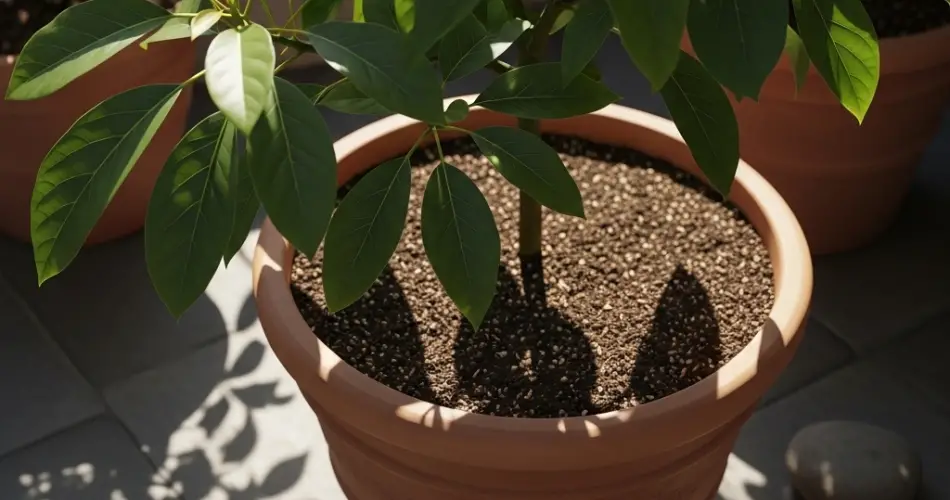Avocados are a nutritious and delicious fruit, prized for their creamy texture and versatility in the kitchen. While they are typically grown in warm climates, it’s entirely possible to grow an avocado tree in a pot, even if you live in a region with colder winters. Container growing offers greater control over the plant’s environment, making it an ideal option for gardeners with limited space. Whether you’re starting from a seed or using a nursery-grown plant, here’s a step-by-step guide to growing avocados in pots.
Step 1: Choose the Right Avocado Variety
Not all avocado trees are suitable for container gardening. Dwarf varieties are best for pot cultivation, as they are more compact and easier to manage. Look for varieties like:
-
Wurtz (Little Cado): A popular dwarf variety that grows well in pots and produces rich, creamy fruit.
-
Holiday: Another compact tree that thrives in containers and has a slower growth rate.
-
Brogden or Bacon: These cold-tolerant types can also adapt well to pots in cooler climates.
Avoid starting with a standard avocado seed unless you’re growing it purely for fun, as seed-grown trees can take over a decade to bear fruit and may not produce the same quality as the parent tree.
Step 2: Select a Suitable Pot
Choose a large pot with good drainage. A 15- to 25-gallon container is ideal for mature trees, but you can start smaller and repot as the tree grows. The container should have several drainage holes to prevent water from pooling around the roots, which can lead to rot.
Plastic pots are lightweight and easier to move, while ceramic or clay pots offer better stability and breathability. Make sure the pot is sturdy enough to support the tree as it matures.
Step 3: Use the Right Soil Mix
Avocado trees prefer loose, fast-draining soil with a slightly acidic to neutral pH (6.0–7.0). Use a well-draining potting mix formulated for citrus or cactus, or make your own by mixing:
-
1 part potting soil
-
1 part perlite or coarse sand
-
1 part compost or aged manure
This combination ensures proper aeration and prevents waterlogging, which is crucial for healthy root development.
Step 4: Planting the Tree
If you’re starting with a nursery plant, gently remove it from its container and loosen the root ball slightly. Place it in the new pot so the root crown sits just above the soil level. Fill in around the roots with your soil mix, firming it lightly but not compacting it.
Water thoroughly after planting to help settle the soil around the roots. Add more soil if needed to maintain the proper level.
Step 5: Position for Sunlight
Avocados are sun-loving plants that require at least 6 to 8 hours of direct sunlight daily. Place your potted tree in the sunniest spot available, such as a patio, balcony, or south-facing window. In cooler climates, bring the tree indoors or into a greenhouse during winter to protect it from frost.
If growing indoors, place the pot near a bright window and consider supplementing with a grow light to ensure adequate light levels.
Step 6: Watering and Feeding
Avocados like consistent moisture but dislike soggy soil. Water when the top inch of soil feels dry to the touch, allowing excess water to drain freely. Avoid letting the pot sit in a saucer of standing water.
Feed the tree every 4 to 6 weeks during the growing season (spring through early fall) using a balanced fertilizer or one specifically formulated for citrus or fruit trees. Look for nutrients like nitrogen, phosphorus, potassium, and trace minerals like zinc and magnesium.
Step 7: Pruning and Maintenance
Regular pruning helps control the size and shape of the tree and encourages bushier growth. Trim back leggy stems and pinch off the tips of branches to promote lateral growth. Remove any dead or damaged leaves and branches.
As the tree grows, you may need to stake it for support. Repotting every 2 to 3 years is also recommended to refresh the soil and accommodate the expanding root system.
Step 8: Pollination and Fruit Production
Many avocado varieties are self-fertile, but they benefit from cross-pollination. If possible, grow two trees of different types to improve fruit set. Outdoors, bees and wind help with pollination. Indoors, you can gently shake the branches or use a small brush to transfer pollen between flowers.
Keep in mind that even under ideal conditions, fruiting may take 3 to 4 years for grafted trees and over a decade for seed-grown ones.
Final Thoughts
Growing avocados in pots is a satisfying project that allows you to enjoy fresh fruit right at home. With the right variety, soil, care, and patience, your container-grown avocado tree can thrive and produce fruit even in small spaces. Regular maintenance, attention to sunlight and water, and seasonal adjustments will help ensure healthy growth and eventually, a rewarding harvest.



